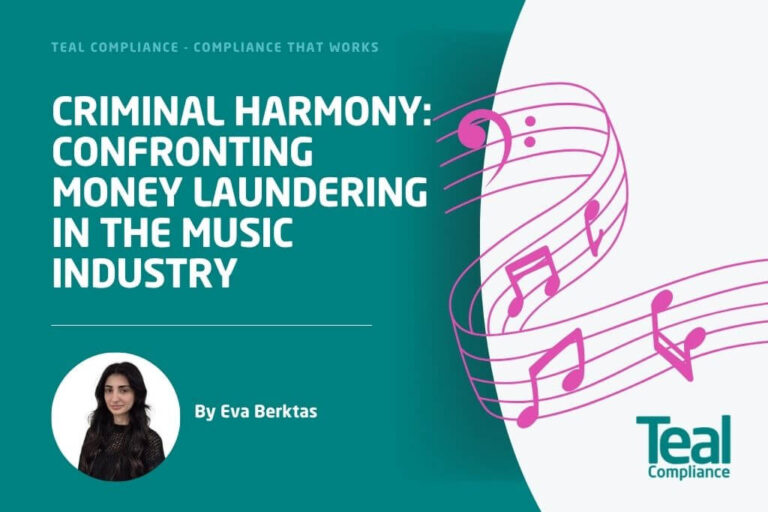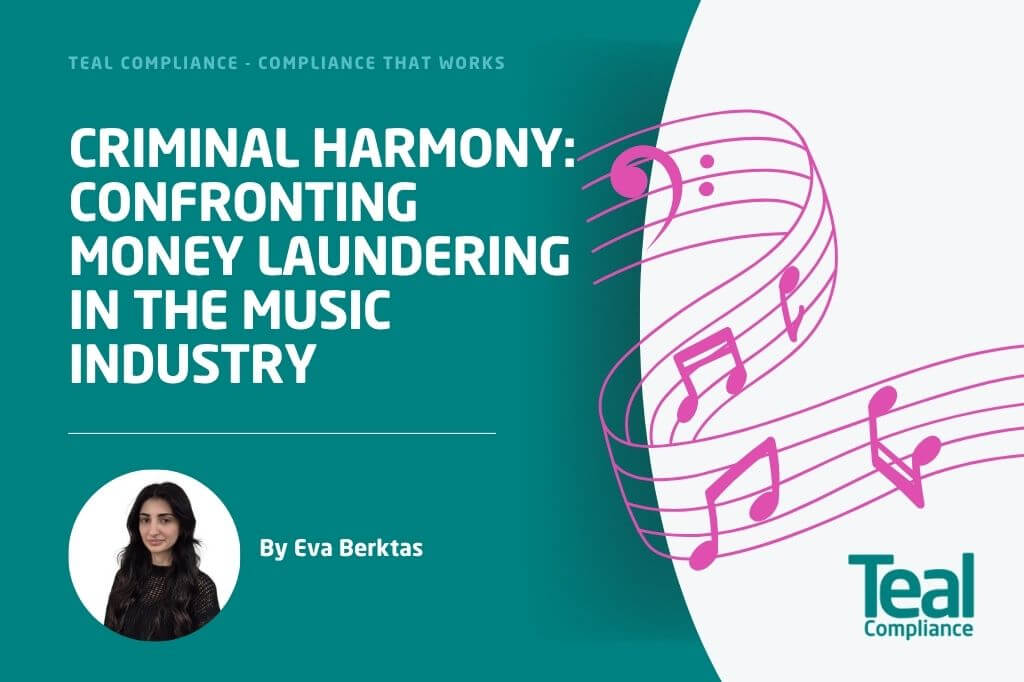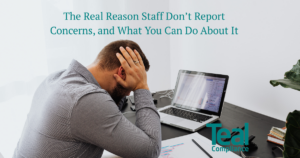Money Laundering - A Silent Threat in a Celebrated Industry
The music industry has long been a space for creativity, culture, and connection. It inspires imagination, offers comfort, and generates huge economic value. Yet behind the glamour lies a quieter reality: the growing use of music as a channel for laundering dirty money.
In the UK, our anti-money laundering (AML) framework is built around the Proceeds of Crime Act 2002 (POCA) and the Money Laundering Regulations 2017. These laws place duties on financial and professional services, but much of the music industry remains untouched. With global digital payments, opaque contracts, and complex royalty systems, this gap in oversight creates an inviting space for criminals.
Why the Music Industry is Vulnerable to Money Laundering
Valuation and Transparency Challenges
Unlike tangible goods, the value of music is subjective. A song or catalogue might be worth millions to one buyer and very little to another. This flexibility makes it easier to inflate deals or hide suspicious payments. Fake record labels, inflated advances, and unclear contracts can all disguise the movement of illegal funds.
Evolution of the Business Model
As music moved from vinyl to streaming, criminals evolved too. In the past, bootleg cassettes and counterfeit CDs were the primary concern. Today, streaming dominates, and so do the opportunities for exploitation. Platforms like Spotify, Apple Music, and YouTube handle huge global payment flows that can be manipulated for financial crime.
How Streaming Fraud Works
Streaming royalties are now a major target for criminals.
The use of “streaming farms”, networks of devices or servers playing songs on repeat, is one of the most common tactics.
Some use rows of cheap phones, while others use sophisticated cloud software to mimic thousands of listeners. Bots are programmed to behave like humans, pausing tracks, skipping songs, and switching playlists. On the surface, the activity looks genuine, but it’s designed purely to trigger royalty payments.
Because royalties are paid per play, even small streaming farms can generate a steady income that appears legitimate. The money then flows through platforms, distributors, and shell companies, obscuring its true origin.
Detecting this kind of fraud requires analysing patterns such as:
- Sudden spikes in streaming numbers
- Plays concentrated in one geographic region
- Songs with high play counts but little social media engagement
Criminals adapt quickly, making it a constant race between platforms and those trying to exploit them.
In 2025, Taylor Swift became Spotify’s most-streamed artist with over 110 billion plays. Even if a small fraction of global streams are fake, the money involved can run into millions and be almost impossible to trace.
Beyond Streaming: Live Music and Merchandise
Money laundering risks do not stop at streaming. Fake tours, inflated ticket sales, and overvalued VIP packages can all serve as laundering channels.
Modern live music involves complex income streams including ticketing, sponsorship, merchandise, and high-value experiences. These are less regulated than record sales, making them a potential weak point.
Legal and Regulatory Blind Spots
Currently, record labels, promoters, and distributors are not directly covered by the UK’s Money Laundering Regulations. Lawyers and accountants may encounter transactions but often see only one piece of a larger puzzle.
Internationally, the Financial Action Task Force (FATF) has examined money laundering in sectors like art and antiques, where value is subjective and global trade is fluid. The same applies to music, yet the industry has not received the same regulatory attention.
For more on gaps in AML oversight, see Teal’s blog:
➡️ Understanding the Blind Spots in AML Supervision
Why It Matters: Protecting Trust and Creativity
Money laundering in music undermines trust at every level. Honest artists are undercut by fake streaming numbers. Platforms face questions about fairness and transparency. Fans may unknowingly support criminal operations simply by streaming certain tracks or buying tickets.
The industry has shifted from selling physical albums to managing digital plays and high-value experiences. The criminal tactics have evolved in parallel. The threat has not gone away, it has simply changed form.
For legal professionals, understanding these patterns is critical. Whether advising clients in entertainment, conducting AML audits, or shaping policy, lawyers and compliance officers play a key role in safeguarding the sector.
Pathways to Reform
Reform does not mean limiting artistic freedom. It means bringing clarity, accountability, and protection for those who create and invest in music.
Key steps could include:
- Extending AML obligations to major music companies and rights management bodies
- Providing banks with specific guidance on red flags in music-related transactions
- Improving international cooperation on royalty payments and anti-fraud mechanisms
- Equipping artists and independent labels with tools to recognise suspicious activity
These steps would strengthen global AML efforts and preserve the integrity of the creative industries.
Conclusion: Keeping Music’s Harmony Intact
Digitisation and globalisation have transformed the way music is made, shared, and monetised. But without better transparency, the same innovations can be exploited for financial crime.
Music should remain a symbol of creativity and community, not a cover for crime. By acknowledging the risks and modernising AML oversight, we can ensure that the future of music rests on talent, not tainted money.
At Teal Compliance, we help businesses and professionals identify and manage money laundering risks in even the most unexpected places.
📩 Get in touch with our team to learn how we can support your AML programme.
Thanks for reading.
Eva

About Eva Berktas, AML Analyst.
Eva came to Teal Compliance from her role at the Solicitors Regulation Authority, and understands how the regulator works behind the scenes. She’s gold dust!




